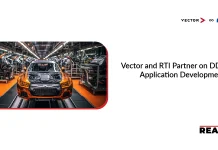QAD Inc. via its business unit Redzone announced the acquisition of Kavida .ai, a UK-based startup specialising in agentic AI for procurement and industrial workflows. The move is set to integrate Kavida’s procurement agents into Redzone’s Champion AI platform – with the aim of freeing up to 50 % of manufacturing buyers’ time by automating post-order and supplier-collaboration tasks.
This development brings important automation to supply-chain and manufacturing systems. Below, we look at what the acquisition means for the Supply Chain industry. We’ll see how it will impact businesses in this area and the key insights companies should take action on.
What the Acquisition Covers
-
Kavida.ai’s procurement agents – covering workflows such as purchase-order (PO) management, RFQ (request-for-quote) processing and supplier collaboration — will immediately become available to QAD | Redzone customers.
-
QAD emphasises that this is not simply another AI add-on: “Manufacturers don’t have time to wait for AI to mature – they need results today,” said Sanjay Brahmawar, CEO of QAD | Redzone.
-
The acquisition brings to QAD a world-class AI engineering team with expertise in agent safety, human-in-the-loop training and unstructured data handling.
-
Closing of the transaction is subject to UK regulatory approval.
Implications for the Supply Chain Industry
1. Automation of Buyer Workflows
The acquisition shows a change in supply-chain technology. Automation is expanding from factory logistics to strategic procurement. Automating post-order tasks and supplier communications helps companies reduce manual work. This also shortens cycle times and allows employees to focus on more valuable tasks.
2. Real-Time Execution & Decisioning
With procurement agents embedded in the operational workflow, businesses gain faster decision-capabilities. RFQs, quotes, PO revisions and supplier allocation can be handled in near-real-time – improving agility in supply-chain operations. The supply-chain industry is thus evolving from reactive to proactive.
3. Integration with ERP & Enterprise Systems
Kavida.ai’s technology focuses on “inbox-to-ERP” automation. It connects supplier emails and documents straight into enterprise resource planning systems. For supply-chain organisations, this highlights the importance of tight system interoperability and digital-thread continuity.
Also Read: Raytheon Technologies and Avio S.p.A. Sign MoU on Solid Rocket Motor
4. Focus on Resilience & Supplier Collaboration
Manufacturers see that supply-chain resilience relies on more than just inventory buffers. It also depends on collaboration and quick response. AI agents handle supplier interactions, so they can address delays, changes, and disruptions faster. This helps maintain resilience in volatile markets.
Effects on Businesses Operating in Supply Chain
Operational Benefits:
-
Buyers, planners and procurement teams can reclaim significant time previously spent on manual tasks – estimated at up to 50 % of time for certain roles.
-
Organisations can accelerate their digital transformation roadmap in procurement, sourcing, and supplier management.
-
Service providers and solution vendors in supply chain automation can partner with platforms like QAD and Redzone. This collaboration allows them to create co-innovative solutions.
Strategic Advantages:
-
Companies adopting agentic procurement workflows may achieve competitive differentiation – faster supplier response, lower lead-times, higher supplier performance.
-
Automated flows capture data, so organizations get better analytics. This leads to improved traceability and ongoing chances for growth in procurement.
-
Vendors and integrators of AI supply-chain tools will see more demand. Manufacturers want ready-made AI solutions for procurement automation.
Challenges & Considerations:
-
Data quality remains foundational. AI agents perform best when procurement and supplier-data, document flows and system connectivity are clean and well-governed.
-
The change-management component is significant: procurement teams must adapt from manual workflows (emails, spreadsheets) to agent-supported execution. founders emphasised this in their announcement.
-
Integration complexity: Embedding agents into ERP systems and supplier channels requires architectural planning, security controls and user-adoption strategies.
-
Talent and training: Buyers and planners will need to work alongside agents — interpreting outputs, acting on exceptions and overseeing automated decisions.
Looking Ahead: What Businesses Should Do
-
Audit procurement workflows: Identify high-volume manual tasks such as follow-up emails, supplier confirmations, PO revisions. Quantify time-lost and evaluate automation potential.
-
Evaluate agentic AI readiness: Assess whether your systems can support inbox-to-ERP automation, document-ingestion, model training and human-in-the-loop controls.
-
Align data & systems: Clean supplier-master data, standardise RFQ/PO document flows and ensure ERP-linkages are robust – agents rely on connected infrastructure.
-
Pilot with high-impact use-cases: Start with specific tasks such as PO acknowledgment, supplier change-order processing or quote-comparison agents; measure time-savings, error-reduction and user satisfaction.
-
Plan for change-management: Train procurement teams on working alongside AI-agents, define exception-handling logic and evolve roles from “doers” to “overseers”.
-
Track outcomes beyond automation: Measure not just hours saved, but supplier-performance improvement, cost reduction, cycle-time gains and supply-chain agility.
Conclusion
QAD | Redzone’s acquisition of Kavida.ai marks a significant milestone in the evolution of supply-chain technology – pushing the industry toward agentic procurement, real-time execution and strategic automation. Businesses in supply-chain management, procurement, sourcing, and enterprise software must act now. It’s time to shift to AI-driven, automated workflows.
As the industry moves from manual email to smart systems, early adopters will gain efficiency, agility, and resilience. This acquisition marks a new era for supply chain teams everywhere. It brings a future that is more automated, collaborative, and focused on performance.




